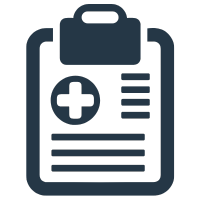
Q&A with Todd Liu
VP of Accountable Care and General Counsel
Griffin Hospital
Accountable care organizations are grappling with the charge of improving ACO quality measures and patient care while controlling costs. At the same time, the current state of the healthcare system is one in which patients are demanding a better patient experience–better access, better communication, and better outcomes.
This Q&A discussion with Todd Liu, Vice President of Accountable Care and General Counsel at Griffin Hospital, covers a few of the challenges facing ACOs like Griffin Hospital, along with multiple strategies Griffin Hospital has implemented to become and stay successful. From pre-visit planning to collaborating with community partners, Todd describes some of the key considerations for ACOs as they use technology and data to help achieve success for their system and their patients.
Tell us about your role overseeing both accountable care and general counsel at Griffin Hospital.

My role evolved organically. I started my career at Griffin in a number of other administrative and operating roles, and, over time, continued to take on more. Griffin got into accountable care in 2013, with the Medicare Shared Savings Program. Then our general counsel retired in 2015, and, like all hospitals, we were trying to keep our costs as low as possible.
How has the ACO landscape adapted to healthcare consumerism?
It's been a long road. We were an early adopter of value-based care in Connecticut, but other parts of the country have been implementing it even longer than we have. Kaiser out in California and some other health systems are old pros at this. We are trying to do some of the things that they started doing years ago.
If you say "accountable care" to the average consumer, most people would have no idea what you are talking about. But the question is, do they see and feel what it means to be in an ACO or what it means to be part of a value-based care arrangement?
I think the consumers that are part of our ACO do feel the difference. They know they're getting more high-touch services, and they know that if they have social needs, we have community health workers that are trying to connect them with services in the community. I believe our patients would acknowledge that things are different than five years ago before we became part of a value-based care arrangement.
How do ACO quality measures drive your work, and what are some challenges you face in quality improvement?
Every program that we participate in has ACO quality measures that we're accountable for. One of the challenges is that we are in eight or nine different ACO arrangements with separate payers, and each payer has its own unique set of quality metrics. Even if the measures overlap, the thresholds and targets can differ. It can be challenging trying to keep up with all of the different ACO quality measures.

It's hard for me to keep track of these metrics – and I'm thinking about this every single day. Imagine what it’s like for the providers taking care of patients. Part of my job is making it easier for physicians, nurses, and other caregivers to focus on patient care, not keeping track of quality metrics.
Three or so years ago, the kinds of ACO quality measures that payers used were more process-oriented. For example, they would want to know if a diabetic patient had their annual retinal eye exam, or if they went into an office to check their A1C.
That's changing. Now, payers are moving to quality measures that are outcome-oriented. For example, is the patient’s A1C level under control? Was it below seven during the course of the year? Or, for someone with high blood pressure, did their high blood pressure get under control? It’s not about doing the right things, it’s about actually achieving a certain health result for the patient.
That's a good thing – we should be striving to help people achieve better health. We should be measured on whether we've actually been successful at controlling their high blood pressure or controlling their A1C. But it does bring its own unique set of challenges.
That takes us back to where we started when we were talking about consumers. If you can't get people interested in their health and engage them in meaningful ways, how can you expect them to adjust their lifestyle and take their medication so they can control their high blood pressure? That’s what we need to do to be successful.
What has Griffin Hospital done to improve the patient experience?

In order to be successful as an ACO we must engage our patients. That term – patient engagement – is somewhat overused, but it means we need to get people interested in taking care of themselves. Maybe more importantly, we have to talk to people about their health in a way that's inspiring and motivating.
Everybody wants to live their best life. As healthcare providers, we have a tendency to label people as noncompliant. But people want to feel good, and they want to be healthy. So how do we figure out what they need to get and stay healthy?
First, we try to understand who our patients are as people and what goals they have for themselves. We began with this concept of patient-centered care at Griffin Hospital back in the 1980s. We've thought a lot about what it means to be person-centered in an inpatient setting, and now we’re taking some of those lessons and applying them to outpatient care. Everybody is different, and we have to meet folks where they are.
What are the top 3 areas of focus in accountable care at Griffin Hospital? How does this impact ACO quality measures?
- We have to identify social and environmental barriers to care. There is literature that tells us that 60 percent of a person’s health is actually not driven by the medical care that we provide as doctors and hospitals, but is actually driven by behavioral, environmental, and social factors. Examples include if you're food-insecure, if you don't have a safe place to live, or if you're concerned about paying your utility bills. In those cases, you probably don’t care all that much about whether you see your primary care physician for an annual checkup. You're more concerned about the immediate needs that you have to meet. In two of the towns that we serve, 50 percent of people don't make enough money to meet their basic living needs.
- We have to figure out what to do once we understand these needs. It’s hard because we're an acute care hospital. We are not experts at how to meet people's food-insecurity needs and people's housing needs, but we have to figure that out and work with community partners to meet people’s needs. Fortunately, Griffin has long-standing relationships with nonprofits in the community to do this work.
- We have to figure out how to take care of people as they get older. We know people are living longer and that they have more and more chronic diseases. Over time, those diseases cost the Medicare program a lot of money. Some statistics point out that about 80 percent of all healthcare spending is spent on only 20 percent of the population. If we're going to make the most efficient use of our resources, we have to focus on the people who are the sickest. Both ACO quality measures and costs are high priorities.

What is Griffin doing to tackle becoming more accountable for ACO quality measures and patient outcomes?

We're trying to put information into the hands of doctors and other clinicians who are taking care of patients. One of the strategies we've used includes the pre-visit planning form. A lot of times there are only five to ten minutes in an appointment, so we have to be proactive and prioritize what providers cover with patients in order to move the needle on our ACO quality measure outcomes.
The pre-visit planning form takes information from different sources. We have payer information that's coming in through claims; we have information coming from the EMR; and we have information from nurses, care managers, and community health workers who interact with patients between their encounters with physicians.
Then we distill all that information into a one or two-page summary to give the physician a quick snapshot of the patient. That way when the physician sees the patient he or she can see very quickly what the patient’s goals are. It may sound simple, but a lot of work went into connecting all of those different data sources.
How has technology changed the way that ACOs use data?
Technology has challenged us to be more resourceful with the data that we have. Healthcare data is imperfect; a lot of times the data that we're using is coming from claims. Claims data can tell you some things and point you in the right direction of a person’s health needs, but there are a lot of things claims data doesn’t capture.
The pre-visit planning form is one way we’ve changed the way we use our data. Our partners at Actium Health have been tremendous in helping us build out that capability. Another example is the screening we're doing for social needs and, even more important than screening, creating a closed loop environment with other providers in our community.
For example, we can connect patients to an organization called TEAM, an anti-poverty agency in our community. They provide services like housing assistance, food assistance, early childhood development, and more. Using Unite Us, we can see when referrals to community providers have been received and what the outcome was. Then, we can go back to that patient to follow up.

What are some strategies for improving access to care and what is the prognosis on access to care right now?

A good place to start is asking, what does access mean to a typical consumer? Does it mean consumers can get in quickly to see their doctors? Does it mean it's easy to use online tools to schedule visits? Does it mean it's easy to change appointments online or to reach someone via phone?
Interestingly, providers think we're doing better at patient access than patients do. At the start of the pandemic, patients reported that access actually improved. There was a tremendous investment made in telehealth that opened up access at the start of the pandemic because many doctors’ offices were closed. There's no doubt that both patients and providers have embraced telehealth more than they did before the pandemic. That's a really good thing.
Lately, however, access to care has stagnated. Patients still have a hard time getting in to see their doctors as quickly as they would like. They don’t feel like they get clear estimates of what it's going to cost for their care. They don't find the digital tools that we're providing (like patient portals or online scheduling) to be easy to use. One big challenge is around staffing, not just in the hospital, but also in physician offices. We've seen a mass exodus of nurses since the pandemic hit. We knew before the pandemic that we weren't training enough nurses and doctors to keep pace with health needs in this country. And when you don't have enough providers, it makes it difficult for people to get care as quickly as they would like to. I remain optimistic that, over time, things will get better. But right now there’s still a lot of work to do.
Listen to the full Hello Healthcare podcast interview with Todd Liu on your preferred streaming platform or listen to the recording below.
About Todd Liu
Todd Liu is the Vice President, Accountable Care and General Counsel, at Griffin Hospital in Derby, Connecticut. He works to promote high quality care and patient satisfaction while also overseeing responsibilities in risk management, compliance, and legal affairs. Todd earned both a J.D. and Master’s of Health Administration at Quinnipiac University and has been working at Griffin Hospital for 19 years. Connect with Todd Liu on LinkedIn.

